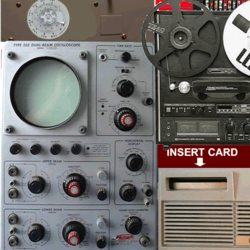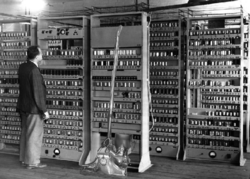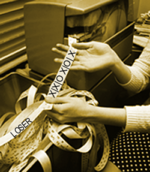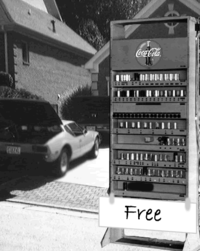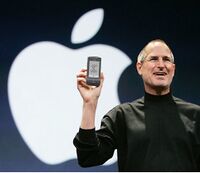EDSAC
The Exceedingly Dominant and Sizeable Analog Computer was one of the most important computers of the mid-20th century created by an English college. The EDSAC was the most advanced computer of the day, capable of processing near a blazing fast 1 instruction per second. Because of this fast instruction speed, the EDSAC was labeled a thinking machine. The first program the EDSAC ever processed was one to compute as many prime numbers as possible, in this case, 2. This was used by several of the College's students to complete a homework assignment, resulting in the first documented case of cheating on a homework assignment using a "thinking machine" - computing the first two prime numbers out of a required sequence of 432.
Eventually it was decommissioned in favor of the EDC, or electronic desk calculator which had come out in the late 60s. EDSAC would be converted into a Vending machine at a fraternity. It was boasted that it could drop over 3 cans per minute.
History
The EDSAC was inspired by the EDVAC - A large automatic vacuum cleaner in the same vein as the Roomba - by John von Neumann. EDSAC was created by Maurice Wilkes, who had nothing important to do at the time. Based on the work done by the EDVAC, he decided to create the EDSAC, which was originally meant to be a machine to automatically dispense pop, but evolved into a calculator when students realized that it had slightly more potential than that.
Usage
To use the EDSAC, one would program an application using a punch card. The punch card would be read by the EDSAC and then the data transferred to its two ton mercury delay lines, which were capable of holding a whopping 1.44 megabytes of memory after their expansion in 1952(previously 10 megabytes were available from their magnetic disk platter technology, quickly scrapped due to reasons "of silliness to think that something so small has any potential of being a real component in an electronic brain[sic]"). Then, the EDSAC would do its computing for several minutes. If the user was lucky, and entered the room the EDSAC was stored in on a good day, the EDSAC would dispense what it found onto a small sheet of ticker tape(or regular paper after 1953). If you wanted to modify your results, the person was able to do so using a rotary phone mechanism(which was placed in 1953 to replace the previous button-based technologies for reasons "...that button based input is a very stupid idea and doesn't sound very futuristic. I mean the word 'button' just sounds plain silly...[sic]"). Sometimes output would be displayed on one of the 55 and one half Oscilloscopes that were used to show the 1.44 megabytes of memory that the EDSAC contained.
Of course, the capabilities of vending were still there. Simply insert your dollar bill into the punch card slot, then dial in your desired pop. After several minutes of processing, you might be able to enjoy a fresh coca-cola dispensed by the EDSAC, or not depending on if the machine is stocked or not. Then you have to try again, that is if the EDSAC didn't eat your dollar bill.
The first video game?
In 1952, Alexander Douglas programmed the game "OXO", also known as "Noughts and Crosses", for the EDSAC. This was a program which played tic-tac-toe against the user; OXO is sometimes regarded as the first digital video game. However, the technology needed to produce cut-scenes was not yet available, so a local Shakespearian theater company had to be hired and kept on hand to act out the cutscenes between levels. The game is also credited with the earliest example of video-game inspired violence. In 1953, after a marathon 15-hour session of "Noughts and Crosses", Douglas began acting erratically, and began to chase aggressively after the squirrels on campus, screaming "Noughts and crosses, bitch! Noughts and crosses!" He then captured 40 squirrels, and using an electric razor and a knife, shaved an "X" or "O" into the fur of each. 16 squirrels had died as a result (they are later eaten), and Douglas was then subdued by campus security for cruelty to animals and was given a sedative.
Attempts to market Noughts and Crosses did not fare well. Reviewers raved about the incredible quality of the graphics- at the time, the 35 x 16 pixel display was light-years ahead of its competitors. However, the packaging of the game- which came in a large box containing 53,732 punch-cards, which had to be entered in precise sequence- was not particularly user-friendly. A larger problem was the game system itself: the EDSAC cost $600,000, weighed six tonnes, and required a team of four full-time technicians to operate.
Milestones
- 1936 - EDVAC created as the first impractical replacement for janitors. Faculty would often complain that because the EDVAC was bolted to the floor, it couldn't clean anything.
- 1937 - Von Neumann releases a report on the design and purposes of EDVAC.
- 1937 - Maurice reads the report and starts building the EDSAC.
- 1940 - EDSAC complete as the world's first impractical vending machine. Students attempt to turn it into an electronic brain after Maurice gives up on the dream that he would claim world fame for his invention.
- 1941 - EDSAC prints out the first 2 prime numbers. World shocked. First documented case of cheating using a so called electronic brain.
- 1942 - Disk platter technology scrapped for Mercury Delay Lines.
- 1943 - Button based input technology scrapped in favor of a rotary telephone input technology.
- 1944 - Student creates the second computer game - Naughts and Crosses - on the EDSAC. The loading times were revolutionary compared to the previous computer game "Mr. White's Math House" based on the ENIAC - with the game loading in only 14 hours instead of 20, and computation of AI at a mere 3 hours rather than the previous record of 6.
- 1945 - Student adds a tape deck to the EDSAC for no particular reason. Later used to play music as people were programming punch cards.
- 1953 - Ticker tape replaced by regular sheets of paper. EDSAC can now draw a large smiley face in a matter of days.
- 1960 - EDSAC project scrapped in favor of EDC project.
- 1961 - EDC outperforms EDSAC in computing 1 + 1.
- 1962 - Frat house converts EDSAC back into a mere vending machine rather than a computer with a vending machine.
- 1973 - Frat house buys a new vending machine. EDSAC scrapped.
Legacy
The legacy of the EDSAC is one of greatness. Without the creation of the EDSAC, humanity would not now how not to construct something as utterly useless as a vending machine doubling as a thinking machine which can process at blazingly fast speeds as 1 instruction per second. The EDSAC would also introduce us into how to hype computers well enough to get the public interested for a few seconds. Here is an excerpt of what one person said about the greatness of the EDSAC:
| “ | Short, dapper Dr. M.V. Wilkes, director of the Cambridge mathematical laboratory and ex-wartime radar backroom boy, is in charge of the calculator ... He told me yesterday: “The brain will carry out mathematical research into the field of vending. It may make sensational discoveries in engineering, astronomy, and atomic physics, or it could just be used by a few prats to goof off like I plan. It may even solve economic and philosophic problems too complicated for the human mind such as which drink I would like to have dispensed to me today. There are millions of vital questions we wish to put to it. However, we can only process 1 at a time." | ” |
—Daily Mail, 1947 | ||
Praise
Although people have had many doubts as to whether the EDSAC had any historical significance whatsoever, several people in the computing field would wish to say otherwise. Bill Gates was once quoted as saying that the EDSAC was very significant in helping build his empire by teaching him how to give substandard equipment to customers while at the same time making them satisfied with what they had gotten. For example, the 640k limit. Steve Jobs had said that the EDSAC would give him the reasons to go into computing, so he could make something that would be just as totally useless as the machine that he had admired. This came into manifestation with the Apple Newton.
Criticism
The late Gary Kildall would call the EDSAC "the greatest piece of shit to ever exist after MS-DOS". Although Gary is incorrect that the EDSAC was a piece of shit, but rather a computer, his words would echo throughout the communities that criticize the EDSAC for sucking. Rob Pike, creator of the Acme text editor and several other Plan 9 from Bell Labs applications would criticize that not even Plan 9 could suck as bad as the EDSAC did. Ralph Baer would also criticize the EDSAC for being, "the other piece of shit that eclipsed my name by making something before me, with the first being Nolan Bushnell after he created pong."
See also
- Apple Newton
- ENIAC
- EDVAC
- Steve Jobs
- Bill Gates
| Featured version: 1 March 2009 | |
| This article has been featured on the main page. — You can vote for or nominate your favourite articles at Uncyclopedia:VFH. | |
